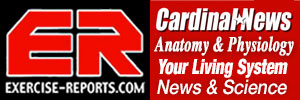
Touring, off-road and racing are popular activities around the world. Important considerations are, ergonomic fit of the body with the bike, preventing traumatic injuries in collisions, preventing overuse injuries, and proper training for intensity and volume. Bicycling involves anaerobic and endurance intensities.
COMPETITIVE BICYCLING EVENTS
All-Terrain (ATB)
Rider is usually on heavier, low gear bikes with big tires and upright handlebars. Course is hilly and/or bumpy.
Criterium
A bike race on a short course of usually 5 km or less with a course on city streets barricaded from automobile and other every day traffic. The race length is determined by the number of laps. Racing bicycles are most common in criterium events, but mountain bikes are
Criterium events often have prizes (known as primes, usually cash or bicycle accessories and attire) for winning specific intermediate laps (for example, every 10th lap).
Criterium athletes require a mix of good technical skills such as the ability to corner rapidly and sharply in a large group of cyclists in tight spaces on a short circuit. Exceptional cardiovascular and anaerobic threshhold fitness to pass other riders and accelerate hard on corners.
Cyclo-Cross
Off-Road race where rider wins with the most laps on a one or two mile rough terrain course.
Road Race
Road races may involve both team and individual competition ranging from a one-day road race, criterium, and time trial to multi-stage events like the Tour de France and its sister events which make up cycling’s Grand Tours.
Stage Race
Touring
Track Racing
Triathlon
Ultra Race
Physiological Goals for Physical Training
Improve sustainable power output (that is, below anaerobic heart rate threshold)
Cross-sectional muscle fiber usage of all muscle fiber types (Type I, Type IIa, Type IIb)
Strength (muscle Type IIa, Type IIb development) — especially for hilly courses
Improve sprinting and acceleration
Decreased heart rate recovery time
Flexibility, Stretching, Muscle Activation by Parallel Agonist/Antagonists, Motor Recruitment
Nutrition (diet and timing, body composition/weight control, glycogen storage, muscle building)
Mind over matter (i.e. no pain, no gain versus speed) increased AT tolerance
Technique/Ergonomics
Bike handling skills
Tactics
Power from hip extension, hip flexion, knee extension, knee flexion, ankle dorsiflexion, plantar flexion
Ergonomics: proper pelvic tilt, knee placement over pedal, seat height related to proper hip/knee flexion and extension, arm reach, head/neck position
Safety, Ergonomics, Mechanical, Bicycle Efficiency
Safety helmet, sunglasses/eye protection
Minimize rolling weight & resistance (wheels & hubs, tires & tubes)
Maximize braking performance (cables, brakes, brake pad compounds, rim surfaces)
Aerodynamics (aerodynamic wheels, aero bike frame, aero bottles, aero helmet)
Minimize frame flex (bike frame materials, design and build)
Bicycle ‘fit’ (saddle shape, tilt, fore, aft, height, crank length, pedal (‘q’ factor, axle tilt), shoe Size/inserts/cleat position, handlebar height, reach/tilt, handlebar stem length)
Clothing (wick moisture away: shorts & inserts, jersey, gloves, helmets, glasses, socks, shoes)
Mechanical readiness (gearing, chain, bearings, cables, cleanliness, lubrication, pressures & torques)
